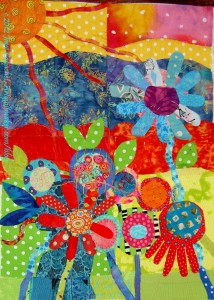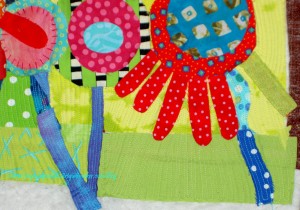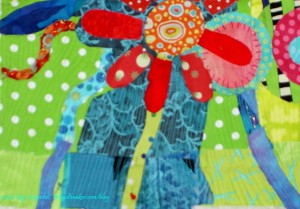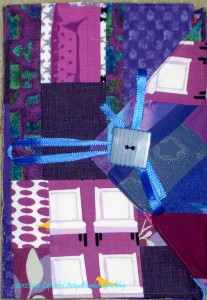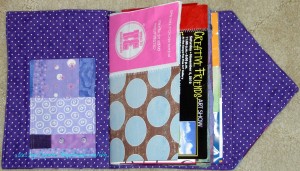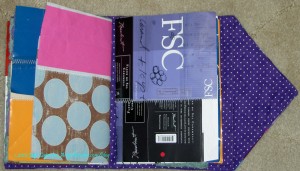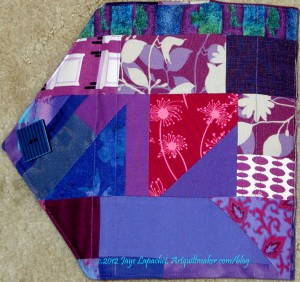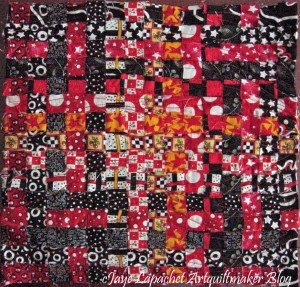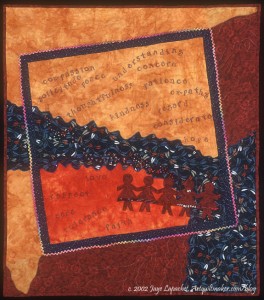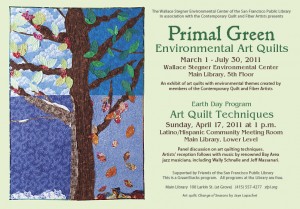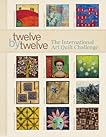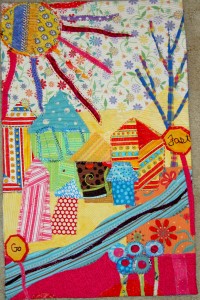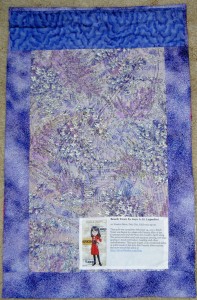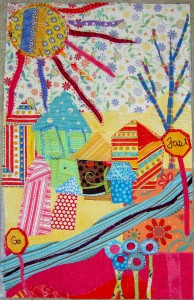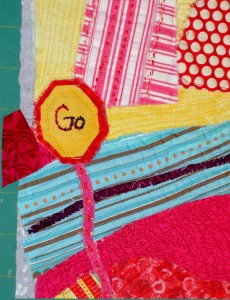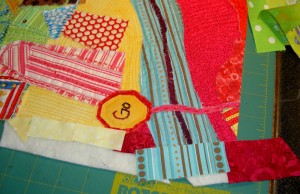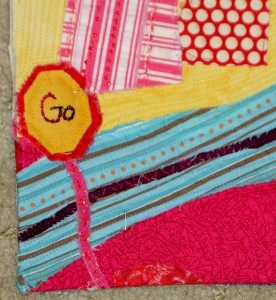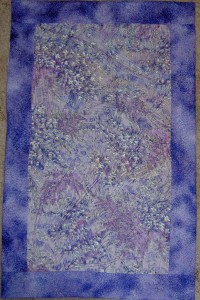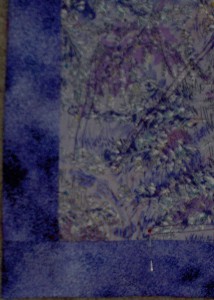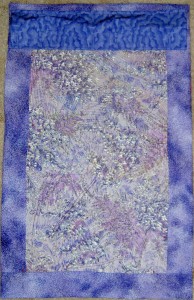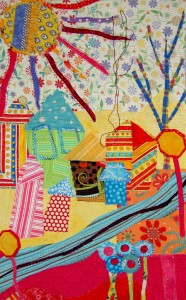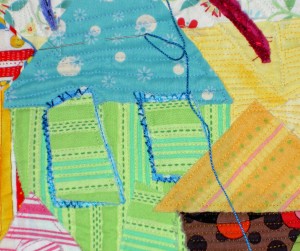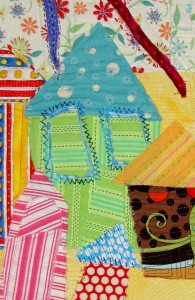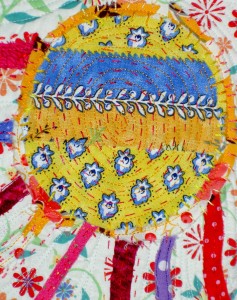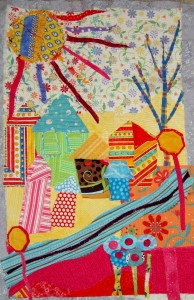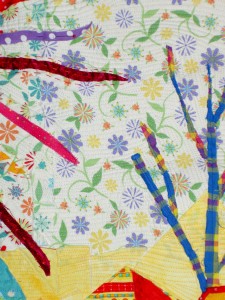UPDATE 8/26/2011: Giveaway is closed. See information about the winner in the 8/26 post. Please leave other comments in the comments section. I love hearing from you.
 Masters: Art Quilts, Vol. 2: Major Works by Leading Artists by Ray Hemachandra
Masters: Art Quilts, Vol. 2: Major Works by Leading Artists by Ray Hemachandra
Another 39 quiltmakers have been included in this volume of Masters:Art Quilts Vol.2, which makes me happy for a number of reasons. First, I think the first volume was successful. Second, there may be more volumes to come. Third, Lark may be setting a trend of inspiration and essay type quilt books. Fourth, more eye candy for me. 😉 I wrote a review of the previous edition in which I wrote the possibility of a series of books on inspiration and I also talked about some of the artists included.
This second volume continues all the good included in the first book. This book also includes different artists, some with whom I am familiar, some of whom are new to me, others who have been absent from my sphere for awhile.
I received this book, again, for free to review from Lark Books. Thanks to Amanda and Ray for keeping me on their list! As if that weren’t enough, Lark has, once again, agreed to give away a copy of this book in conjunction with this book review to one of you lucky readers! See the rules below.
This book is thick, square and heavy. Each of the 39 artists, again, have multiple pages on which their works are displayed. As I mentioned in my previous review, this layout gives the reader an idea of the breadth of work each artist has produced. Additionally, the layout celebrates the artists throughout the book: the title page has their names. The back cover has the artists’ names. The table of contents lists them and each section devoted to the artist has their name on the edge of the page. This layout seems makes me feel good about reading this book.
Martha Sielman curated this group of quilts. She reminds us, in her introduction, that the point of art quilts is to look beyond the obvious imagery to what the artist is trying to say. Art quilts have been on my mind, in particular my art quiltmaking since I co-hosted Creative Mojo with Mark Lipinski, and reading the introduction helping me move towards understanding what I am thinking about in relation to art quilts. In some respects art quilts are about a story and Sielman says “you’ll discover many stories that enrich your appreciation of both art and the world around you.” (pg.7). So far, I think this is true for me. The introduction, which I read after I perused some of the photos made me wonder about photo realistic quilts again. The question in my mind is whether or not the artists that use this technique trust their own drawing or painting or image development skills? I wonder…
I noticed a lot of neutrals throughout the book. I expect that in an art quilt book because a lot of the artists use nature imagery.
Nelda Warkentin’s work looks like fractured ice crystals. Her piece, Tropical Dream (pg.140) is spare compared to other works and it contrasts with other dense complicated work. It gives the reader the opportunity to meditate on the wide variety of art quilt imagery.
Reiko Naganuma’s quilts are bright and cheerful. They are a contrast to many of the other quilts, but they still fit in. Her quilts also appear to have visible texture (pg.169, 171).
I was very pleased to see Rise Nagin show up in this book. Her quilt, Target: On the Beach (pg.221), has been on my mind lately. I remember seeing it in the early 1990s and, lately, I was wondering if she had moved on to a different medium. Her older work has an ethereal quality while her new work has more color and layers. Seeing Nagin’s work again makes me wish for more biographical information in this book.
In looking through this book, with its wide variety of quilts, I found that many art quilts are messy. It occurred to me that messy quilts could be a turn off for some people and made me wonder if art quilts could be made neatly. Warkentin’s piece, Tropical Dream (pg.140) is fairly neat, which further led me to wonder what role the neatness/messiness of the quilt plays in the quilt’s story?
My favorite piece is probably Letters Lost by Margery Goodall (pg.293). I am surprised at the name, but that makes me like it all the more. This quilt has rectangles laid down in vertical rows. The rectangles are sewn with one straight line through each column of rectangles. The colors are very light as well. Not one color, but very pale with hints of brighter colors. I like the texture of the fabric that is not completely sewn down.
I also like the paper doll feeling of Rachel Brumer’s quilt Triplets (pg. 320). I would have liked to see an index with all of the names of the quiltmakers and their quilts in alphabetical order.
There is a lot of piecing in this book and many of the artists used commercial fabric. There are a lot of faces depicted in this book. The editors have not highlighted one technique or image. There is a wide variety of work and artists, so that all quiltmakers could enjoy this book. This book should definitely be on your ‘to purchase’ list.
View all my reviews
Giveaway Rules:
1. Go to the Lark Crafts site and find something quilt related that you enjoy
2. Come back here and tell me about it in a comment on this post. Write something meaningful or thoughtful.
3. The giveaway deadline is 8/19. I’ll pick a winner after midnight on 8/19 and post it over the weekend.
4. Make sure I can get a hold of you.
